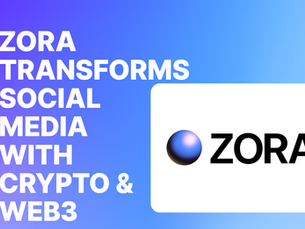Proof of Work (PoW)
Proof of Work (PoW) is a consensus mechanism used by blockchain networks to validate transactions and add new blocks to the blockchain. It requires participants, called miners, to solve complex mathematical problems to prove they have expended computational power.
_%20mininig%20bitcoin%20ethereum.webp)
What is Proof of Work (PoW)?
Proof of Work (PoW) is one of the most widely known consensus mechanisms in blockchain technology. It was first popularized by Bitcoin, the world's first cryptocurrency, and has been fundamental in ensuring the security and integrity of many blockchain networks. The idea behind PoW is simple: participants known as miners must perform computational work to solve complex mathematical problems. This process proves that the miner has expended significant computational resources—hence the name "proof of work."
The PoW mechanism works as follows:
Mining: Miners compete to solve a cryptographic puzzle, which requires significant computational power. The first miner to solve the puzzle gets the right to add a new block of transactions to the blockchain.
Reward: Once a block is successfully added, the miner is rewarded with a certain amount of cryptocurrency (e.g., BTC for Bitcoin miners). This reward serves as an incentive for miners to participate and maintain the network.
Security: The complexity of the puzzles and the computational power required make it extremely difficult and expensive for any single entity to alter or corrupt the blockchain. To change a single transaction in a block, an attacker would need to redo the Proof of Work for that block and all subsequent blocks, which requires a prohibitively large amount of computational resources.
Proof of Work is crucial for ensuring that all participants in a blockchain network agree on the correct version of the ledger, making the network trustless and secure. It also protects against double-spending—a situation in which someone tries to spend the same digital currency twice—by ensuring that new transactions are verified and linked to previous blocks.
However, PoW has faced criticism for several reasons:
Energy Consumption: PoW requires miners to use energy. The race to solve complex puzzles leads to electricity consumption, which energy backs the network.
Scalability Issues: Due to the time and energy required to solve cryptographic puzzles, PoW networks can struggle to handle a high volume of transactions quickly but have more decentralization and greater consorship resistance.
Centralization: As mining becomes more competitive, it requires more powerful and expensive hardware. This has led to the rise of mining pools and companies with specialized hardware, creating some level of centralization in what was meant to be a decentralized system. However the genius behind the deisgn ensures that it is very anti-fragile even to this.
PoW has been very successful in securing large blockchain networks like Bitcoin for over a decade. Ethereum, initially launched with PoW, but transitioned to Proof of Stake (PoS) to address scalability and energy consumption concerns.
Keywords:
proof-of-work pow blockchain-consensus bitcoin-mining cryptographic-puzzle decentralized-security energy-consumption scalability-blockchain























